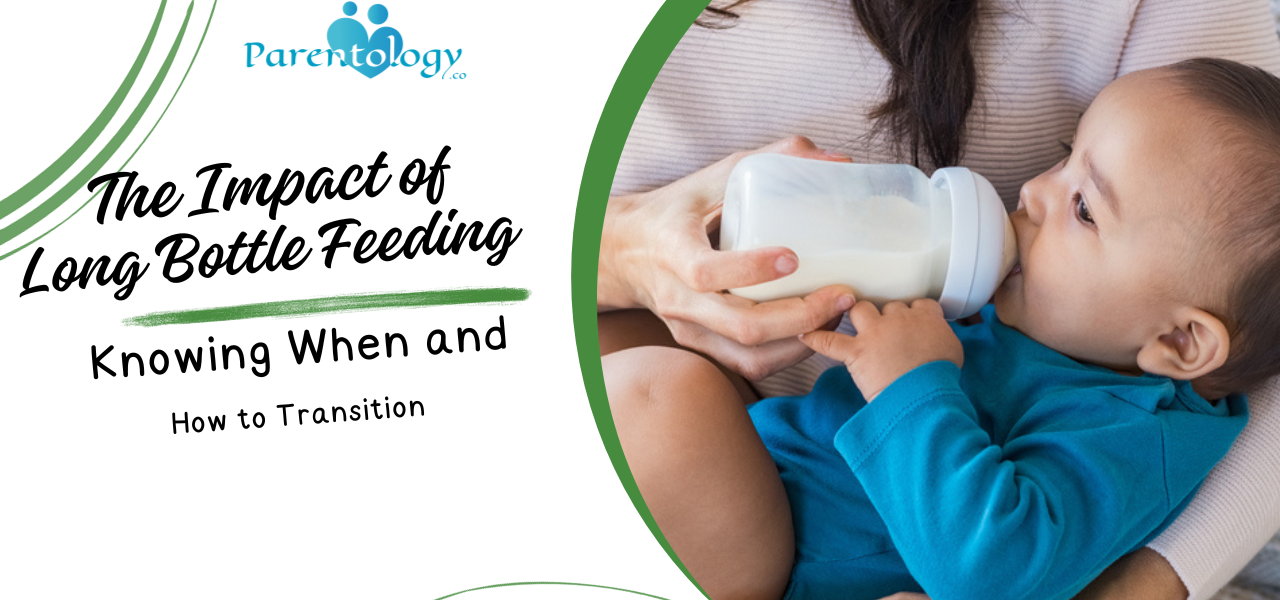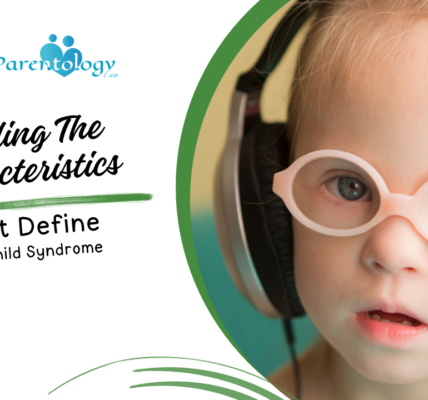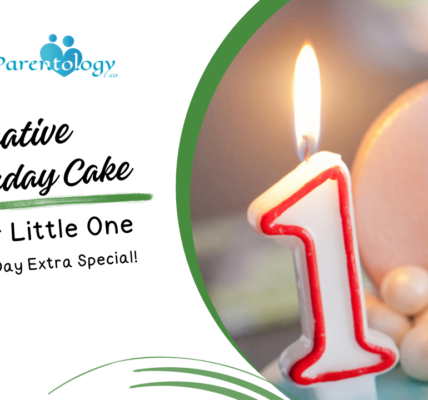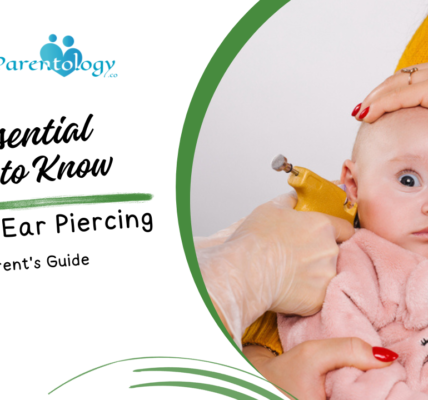The Impact of Prolonged Bottle Feeding on Babies: Knowing When and How to Transition
Bottle feeding serves as an essential means of nourishment for infants, but understanding the potential effects of continuing effects of bottle feeding too long is crucial for a child’s overall well-being. This comprehensive guide delves into the consequences of prolonged bottle feeding and provides actionable steps on when and how to transition your little one from bottles to alternative feeding methods.
Unraveling the Effects of Bottle Feeding too Long
Stunting Speech Development
Extended bottle feeding could potentially impede a baby’s speech development. Frequent sucking on a bottle’s nipple might hinder the necessary oral muscle development crucial for speech milestones. When babies primarily use bottles instead of exploring varied feeding methods, it might delay their ability to articulate and communicate effectively.
Dental Dilemmas
Effects of bottle feeding too long, particularly with sugary liquids, elevates the risk of dental complications. Constant exposure to sweet substances through prolonged bottle use increases the likelihood of tooth decay, misalignment, and other oral health issues. The continuous contact between sweet liquids and teeth might lead to cavities and enamel erosion, impacting a baby’s oral health.


Nutritional Challenges
As infants grow, their dietary requirements evolve. Relying excessively on bottle feeding might hinder the transition to solid foods. Over-dependence on bottles for nourishment can result in an imbalanced nutritional intake, potentially affecting the baby’s growth and development.
Elevated Ear Infection Risks
Feeding babies with bottles while lying down poses a risk of increased ear infections. Liquids from the bottle can flow into the ear canal, creating a conducive environment for infections. This practice can contribute to a higher incidence of ear infections among infants who are frequently fed while lying down.
Weaning Woes
Continued bottle feeding for an extended duration may make weaning off the bottle a more challenging process. Babies accustomed to the comfort of the bottle may resist transitioning to alternative feeding methods, making it a complex and gradual adjustment for both the baby and caregivers.
Determining the Right Time to Stop Bottle Feeding and How to Initiate the Transition
Identifying Cues for Transition
- Age Milestones: The recommended age to start transitioning from bottles to cups or solid foods is typically between 12-18 months. This period aligns with crucial stages of oral development and marks an ideal time to introduce alternative feeding methods.
- Self-Feeding Interest: A baby’s interest in self-feeding or showing the ability to hold a cup signals readiness for transitioning away from bottles. Observing cues of self-dependence indicates the baby’s growing capability to explore different feeding tools.
- Reduced Bottle Dependency: When babies display diminished interest in bottle feeding or are obtaining a substantial portion of their nutritional needs from solid foods, it signifies a natural progression toward transitioning from bottles. Recognizing reduced dependency on bottles is a pivotal cue for initiating the transition process.


Strategies for Smooth Transition to Reduced the Effects of Bottle Feeding too Long
- Gradual Shift: Gradually replace individual bottle feeding sessions with cups or sippy cups. Initiate this process with patience and gradually decrease reliance on bottles while introducing alternative feeding methods.
- Introduction of Variety: Offer a variety of cups or spouts to find one that suits the baby’s preferences. Experimenting with different cup designs encourages the baby to adapt to the change more willingly.
- Encouraging Independence: Encourage the baby to hold the cup and practice self-feeding. Empowering them to handle their feeding utensils fosters a sense of autonomy and aids in a smoother transition away from bottles.
Prioritizing Baby’s Comfort
- Comfort with New Feeding Tools: Assess the baby’s comfort and acceptance with the new feeding tools. Some babies may readily adapt to cups, while others might need more time and encouragement to embrace the change.
- Responsive Transition: Pay attention to the baby’s cues and responsiveness during the transition process. Acknowledge their preferences and make adjustments accordingly to ensure a smoother shift away from bottles.
- Positive Reinforcement: Offer positive reinforcement during the transition phase. Praising the baby’s efforts and providing reassurance can help alleviate any resistance to the change.
Consistency and Patience
- Consistent Routine: Maintain consistency in the transition routine. Gradually reducing bottle feedings while steadily introducing alternative options establishes a predictable feeding schedule for the baby.
- Patient Approach: Embrace patience throughout the transition period. Every baby adapts differently to changes, so allowing ample time and patience is crucial for a successful transition.
- Flexibility and Adaptability: Be open to adjustments. If certain feeding tools or methods are not well-received initially, explore other options and adjust the approach to suit the baby’s preferences.


Involvement of Caregivers and Support System to Reduce the Effects of Bottle Feeding too Long
- Family Involvement: Involve family members or caregivers in the transition process. Consistent support and involvement from those around the baby can reinforce the transition efforts.
- Guidance and Advice: Seek guidance from pediatricians or child specialists if encountering challenges during the transition. Professional advice can offer tailored strategies and solutions for a smoother transition.
- Creating a Supportive Environment: Foster a supportive environment for the baby during the transition phase. Encourage caregivers to maintain a positive attitude and offer encouragement to the baby throughout the process.
Encouraging Healthy Feeding Habits
- Introduction of Solid Foods: Gradually introduce solid foods alongside the transition from bottle feeding. This step helps babies adapt to different textures and tastes, promoting a diverse and balanced diet.
- Limiting Sugary Beverages: Encourage the consumption of water or milk over sugary beverages. Minimizing the intake of sugary liquids reduces the risk of dental issues associated with prolonged bottle use.
- Establishing Mealtime Routines: Implement consistent mealtime routines to cultivate healthy eating habits. Establishing regular feeding schedules contributes to the baby’s overall well-being and development.
Addressing Emotional Aspects
- Comfort and Reassurance: Acknowledge the emotional aspects of the transition. Offer comfort and reassurance to the baby during this period of change to help them feel secure and supported.
- Celebrating Milestones: Celebrate milestones achieved during the transition. Recognizing and praising the baby’s progress fosters a positive association with the transition process.
- Parental Support: Prioritize parental support and communication. Sharing concerns, experiences, and strategies among caregivers can alleviate stress and facilitate a smoother transition.
Embracing Independence
- Encouraging Self-Feeding: Gradually encourage the baby to self-feed using cups or utensils. Empowering them to feed independently nurtures their sense of autonomy. It will help the babies to reduce the effects of bottle feeding too long.
- Exploration and Adaptation: Allow time for the baby to explore and adapt to new feeding tools. Offering a variety of cups or feeding utensils encourages curiosity and adaptability.
- Respecting Preferences: Respect the baby’s preferences during the transition. Adapting the transition process to suit their preferences fosters a positive feeding experience.


Continual Monitoring and Adjustments
- Observation and Evaluation: Continually observe and evaluate the baby’s response to the transition. Being attentive allows caregivers to make necessary adjustments for a smoother transition.
- Flexibility in Approach: Remain flexible and adaptable in the approach. Adjust strategies as needed based on the baby’s comfort and receptiveness to ensure a gradual and successful transition.
Supporting Optimal Development
- Encouraging Interaction During Meals: Engage in interactive and positive mealtime experiences. Encouraging conversation and interaction during feeding sessions fosters social development and positive associations with food.
- Introducing Varied Textures: Gradually introduce a variety of textures in solid foods. Offering diverse textures supports oral motor skill development and prepares the baby for a wider range of foods. Consuming solid food can decrease the effects of bottle feeding too long.
- Promoting Healthy Eating Habits: Emphasize the importance of nutritious food choices. Introducing a variety of healthy foods early on promotes lifelong healthy eating habits and dietary preferences.
Transitioning Strategies for Different Ages
- Early Transitions: For younger babies, start introducing sippy cups or alternative feeding methods around 6-9 months. Familiarizing them with cups early can ease the transition process later on.
- Toddler Transitions: With toddlers, emphasize the benefits of using ‘grown-up’ cups or straw cups. Providing choices and involving them in the process can increase their enthusiasm for the change and reduce the effects of bottle feeding too long.
- Preschool Preparation: For older toddlers or preschoolers, gradually phase out bottles by emphasizing their role as ‘big kids’ and introducing exciting new cups or utensils.
Sustainable Approaches and Environmental Consciousness
- Transition to Reusable Cups: Encourage the use of reusable cups or eco-friendly feeding utensils. Transitioning away from bottles to sustainable alternatives aligns with environmentally conscious parenting practices.
- Reducing Plastic Waste: Minimize the use of plastic feeding materials. Opting for sustainable and non-toxic alternatives contributes to reducing plastic waste and promoting a healthier environment for future generations.
Transitioning from bottle feeding involves recognizing the appropriate timing based on developmental cues and implementing gradual changes to introduce alternative feeding methods, thereby promoting a seamless and successful transition for the baby’s overall growth and development and that’s how the effects of bottle feeding too long can be decreased.
FAQs on Effects of Bottle Feeding too Long:
1. What age should I stop bottle feeding my baby?
Experts recommend transitioning from bottles to cups between 12-18 months for better oral development.
2. Can the effects of bottle feeding too long cause dental problems?
Yes, extended bottle use, especially with sugary liquids, can lead to dental issues like cavities and misalignment.
3. How do I transition my baby from bottles to cups?
Begin gradually by replacing one bottle feeding session with a cup, introducing variety, and encouraging self-feeding.
4. What if my baby refuses to stop using the bottle?
Patience is key. Introduce cups gradually, positively reinforcing the transition process.
5. Can prolonged bottle use affect speech development?
Yes, it may potentially delay speech development as babies might not develop essential oral muscles.
6. Are sippy cups a better alternative to bottles?
While sippy cups are an option, transitioning to regular cups is preferable for proper oral development.
7. How can I prevent ear infections due to bottle feeding?
Avoid feeding while lying down and ensure your baby is in an upright position during bottle feeding to reduce the risk of ear infections.
8. Is occasional comfort feeding harmful?
Occasional comfort feeding might not cause harm, but extended reliance on bottles can impact developmental milestones.
9. How vital is parental encouragement in bottle weaning?
Positive encouragement and patience from parents significantly aid babies in adapting to the transition away from bottles.
10. Should I seek professional help for bottle-weaning difficulties?
Absolutely. Consulting a pediatrician or feeding specialist can offer tailored guidance and support during the transition.
Conclusion
The transition from bottle feeding to alternative feeding methods signifies a significant milestone in a baby’s development. Understanding the cues of indicating the right time to stop bottle feeding and implementing strategies for a smooth transition are pivotal for a child’s growth and independence, and decreasing the effects of bottle feeding too long.
By prioritizing the baby’s comfort, maintaining consistency, embracing patience, involving caregivers, and seeking professional guidance when needed, caregivers can navigate this transformative phase effectively. This journey fosters not only the development of healthy feeding habits but also the baby’s overall growth and independence.
For more insights and comprehensive guidance on transitioning away from prolonged bottle feeding, visit Parentology.co for expert advice and additional resources.





